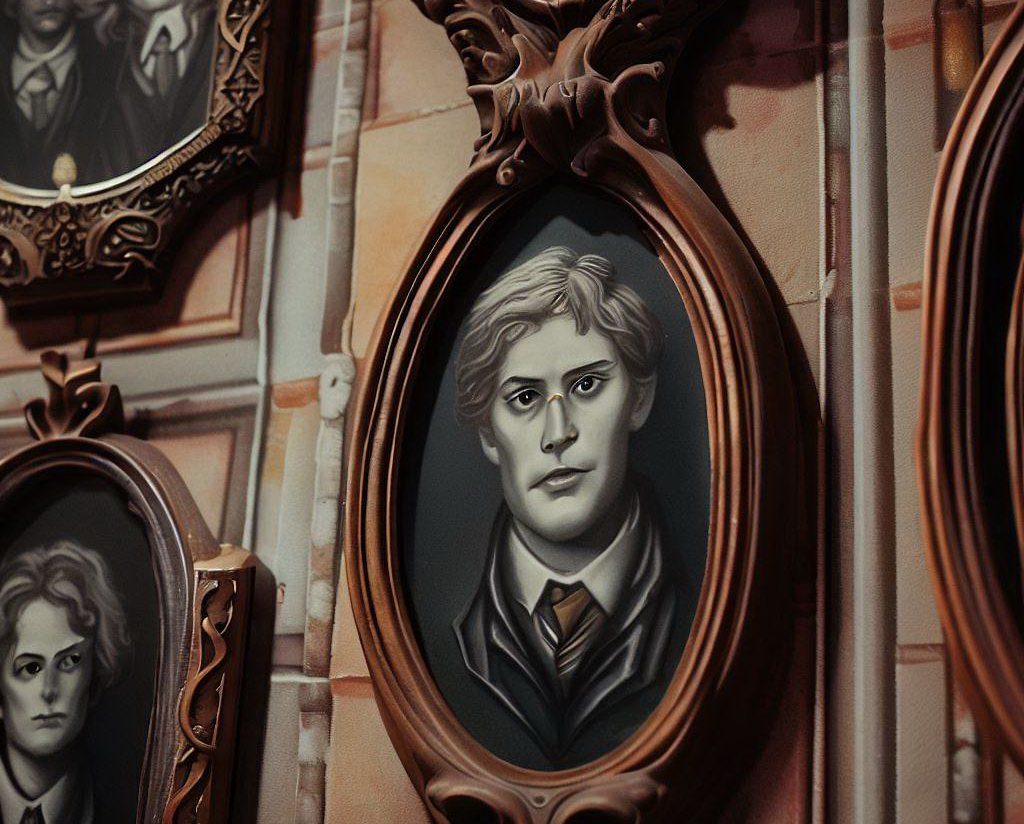Introduction:
Within the intricate tapestry of the wizarding world lies an enchanting form of magic that brings portraits to life. These animated images, more than mere representations, hold a fragment of their subject’s essence and personality. This article delves into the enigmatic art of wizarding portraits, exploring the process of their creation, the qualities that set them apart, and the exceptional case of Albus Dumbledore’s portrait.
The Essence of Enchantment:
Wizarding portraits are not static depictions; they embody a level of enchantment that goes beyond the visual. Created by skilled wizards and witches, these portraits capture more than just appearances; they encapsulate fragments of the subject’s personality, wisdom, and memories. Through intricate spells and charms, the essence of the individual is woven into the canvas, resulting in a magical entity that can converse, react, and impart insights.
Creating a Living Image:
While the exact process of creating a wizarding portrait remains shrouded in mystery, it’s clear that it requires both magical prowess and intent. The creator must possess a deep understanding of magic, capable of infusing the portrait with elements of the subject’s character. Intent plays a crucial role; the creator must intend to imbue the portrait with a semblance of life, enabling it to interact and communicate.
The Role of Personality:
A wizarding portrait’s effectiveness hinges on the subject’s personality. Individuals with strong, distinct traits are more likely to yield portraits that are vibrant and expressive. The portrait’s ability to convey wisdom, humor, and unique characteristics stems from the personality embedded within the magical framework. This dynamic quality sets wizarding portraits apart from conventional art.
Dumbledore’s Portrait: A Case Study:
The portrait of Albus Dumbledore stands as a testament to the complexity and potential of wizarding portraiture. As a brilliant and wise wizard, Dumbledore’s portrait embodies not only his likeness but also his profound insights and guidance. It’s suggested that Dumbledore consciously channeled some of his wisdom and memories into his portrait, allowing it to provide guidance to those who seek it.
Unique Circumstances and Mastery:
Dumbledore’s portrait raises questions about the creation of particularly sophisticated portraits. His exceptional magical abilities and understanding of complex enchantments likely played a pivotal role in crafting a portrait of such depth. The Elder Wand, his connection to various magical objects, and his unique relationship with death might have contributed to the portrait’s complexity.
Interacting with the Departed:
The concept of interacting with a portrait after an individual’s death is both poignant and magical. It allows loved ones and successors to seek guidance, advice, and the comfort of the departed’s presence. Interactions with portraits create a sense of continuity and connection, bridging the gap between the living and those who have passed on.
Legacy through Art:
Wizarding portraits serve as a powerful tool for individuals to leave behind a legacy. They provide a means for wisdom, personality, and memories to transcend death, ensuring that the influence of notable figures endures beyond their time. The magical art of creating portraits becomes a vessel for the continued impact of wizards and witches on the world.
Conclusion:
The creation of wizarding portraits stands as a testament to the intricate intertwining of magic and artistry. Through skilled enchantment and the infusion of personality, these animated images become windows into the souls of their subjects. Dumbledore’s portrait exemplifies the potential of this art, offering wisdom and insight to those who seek it. As we explore the wizarding world’s unique forms of magic, the enchanting allure of portraits reminds us that even after death, a magical essence can remain, guiding and inspiring those who continue the journey.

